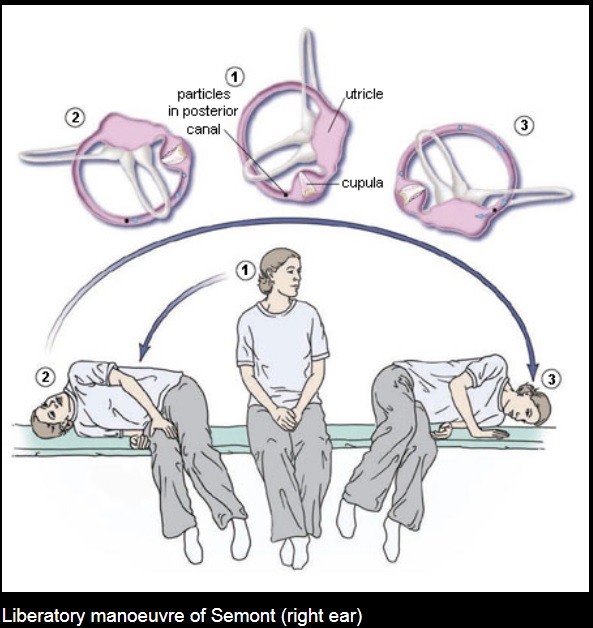

- #Benign paroxysmal positional vertigo epley maneuver how to#
- #Benign paroxysmal positional vertigo epley maneuver series#
Your head will now be looking 45 degrees to the left.
#Benign paroxysmal positional vertigo epley maneuver how to#
It may also be useful to know how to do this maneuver if your BPPV comes back after a few months or years. You may need to do the home Epley maneuver if you still have symptoms after you leave your healthcare provider’s office.

He or she may teach you the home Epley maneuver. Your healthcare provider may first do the original Epley maneuver in his or her office. Your healthcare provider may also suggest that you see a vestibular therapist for treatment.

Your healthcare provider may suggest the home Epley maneuver if your health history and physical exam support that you have BBPV. It often works well to treat the symptoms of BPPV. The home Epley maneuver is safe and inexpensive. Often BPPV happens without any known cause. These symptoms may be more frequent at times. In BPPV, vertigo may come on with certain head movements. You may need to try the home Epley maneuver if you have symptoms of BPPV. Why might I need the home Epley maneuver?
#Benign paroxysmal positional vertigo epley maneuver series#
These are a series of movements that you can do without help, in your own home. The original Epley maneuver was designed to be done with a healthcare provider. These movements bring the crystals back to the utricle, where they belong. John Epley designed a series of movements to dislodge the crystals from the semicircular canals. This can make you feel like the world is spinning. When these crystals move inside the canals, they may send incorrect signals to your brain about your position. Sometimes these crystals detach from the utricle and end up inside the semicircular canals. It contains calcium crystals (canaliths) that help it detect movement. They detect motion and send this information to your brain. Your semicircular canals are found inside your ear. You can do this exercise at home.īPPV is caused by a problem in your inner ear. The home Epley maneuver is a type of exercise help that helps to treat the symptoms of benign paroxysmal positional vertigo (BPPV).


 0 kommentar(er)
0 kommentar(er)
